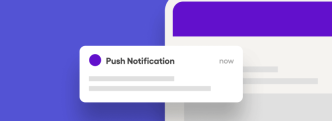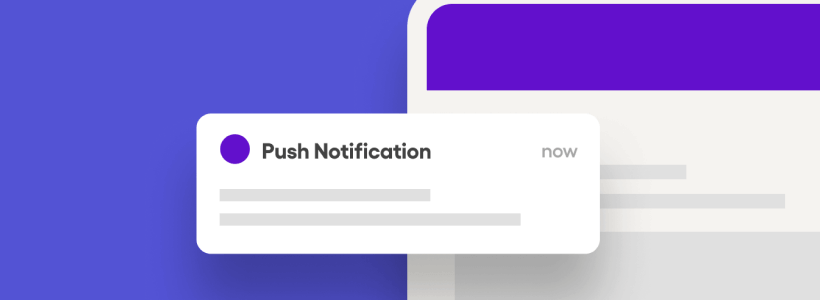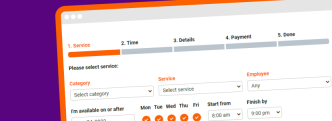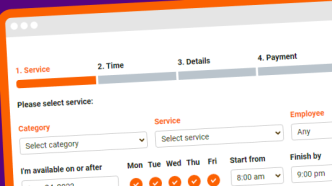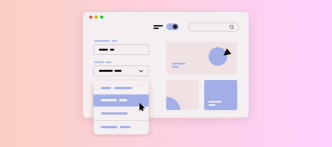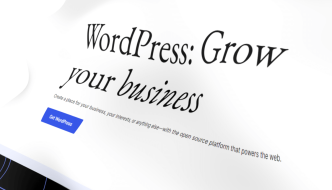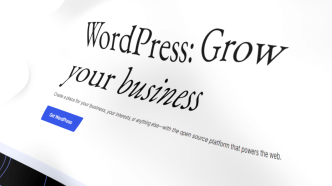In the Summer of 2009 – Apple took a significant step in creating an entirely new and unique marketing channel: push notifications. Now, whether or not marketing was their primary goal for this service is debatable. But we know that push notifications are heavily used for both eCommerce and general communication. Google followed shortly after.
Over the years, a significant shift has been made in how push notifications are used. I still remember when during the early 2010s – a large proportion of blogs and magazines tried to use push notifications to collect subscribers. But that trend seems to have faded for good.
It makes little to no sense for users to subscribe with push notifications to blogs that they have only visited once. However, there are still plenty of ways to implement push notifications that boost your conversions, particularly for eCommerce-based platforms.
Besides, suppose you are serious about keeping up with a particular blog/magazine because it has great content. In that case, a more flexible approach is to use an actual RSS reader, many of which let you customize feeds, categorize them, and even save text directly.
The most popular types of push notifications
If you never do shopping online – you probably won’t know that push notification are among the top 3 leading marketing techniques for promoting special offers and discounts.
Whether it’s alerting users about an abandoned cart, reminding them about a particular product, or performing trigger-based reminders: push notifications are extremely popular in eCommerce.
Type 1: Abandoned cart reminders
There are dozens of different reasons why a customer might abandon their cart. And, it isn’t always about you. Sometimes it might be related to shipping issues, pricing, et al.
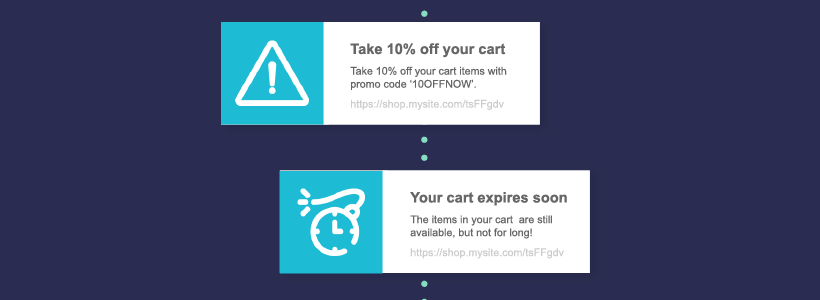
With push notifications – you can send timely reminders to your customers about the items they left in their carts. And, you can further extend this reminder by including a special offer.
Type 2: Trigger-based notifications
Most push notification software provides extensive analytical tools that can provide an in-depth overview of how to best segment your subscriber base. Here are a few examples:
- Personalization. Use the data you have about your subscribers and personalize messages to create a more unique communication experience.
- Custom-made customer journeys. With this approach, you can trigger specific notifications based on the page (product, article, etc.) that the visitor is viewing. The same goes for when a specific action is completed.
- Onboarding. Much like onboarding in email marketing – push notifications can also be used to create detailed introductions about your product or services.
The more data you have the easier it will be to create truly personalized campaigns.
Type 3: Content updates & more
The difference between push notifications and email marketing is that push notifications tend to generate an instant response. But, this also comes at a cost. If you go too “hard” and send frequent updates, chances are you’ll lose people’s trust and ultimately interest in your service.
So, when it comes to pushing content updates or new product announcements – think of ways you can do this without making the end-user feel like they’re being exploited.
WordPress Plugins for Adding Push Notifications
The following segment highlights the best WordPress plugins for adding push notifications to your website, blog, or eCommerce store. All of the plugins have a free plan, though you should assume that the free plan imposes certain limits.
1. OneSignal
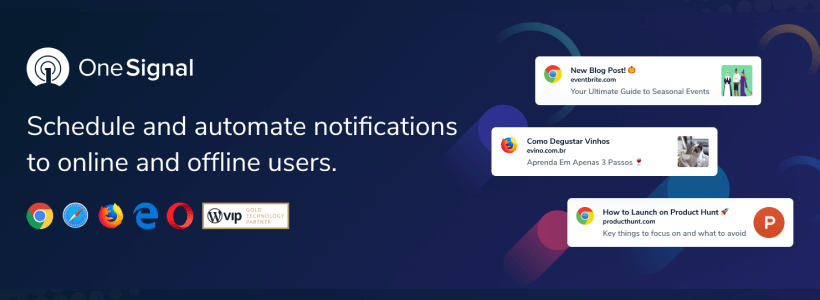
I’ve had the pleasure of doing freelance work together with the folks at OneSignal, and I know they’re a very passionate and candid team. Furthermore, their collection of articles and tutorials on how to get the most out of push notifications is unmatched. In fact, if you do any search related to the topic, chances are a OneSignal article will be one of the top results.
And the number of active installations for their plugin also speaks for itself. So, what do you get with this plugin, and why is it so popular? Here are a few key features:
- Universal Browser Support: OneSignal’s notifications work on Chrome, Firefox, Safari, Edge, Opera, and all their Mobile-based counterparts.
- Notify on Publish: Send out notifications whenever you publish a new blog post.
- Analytics: Collect real-time data about which notifications get the most exposure and build a strategy based on that data.
- Scheduling: Use your analytics data to schedule notifications based on factors like opening times and individual timezones.
Once you create a OneSignal account (for the API key) – you’ll get access to an extensive dashboard for adding and managing new notification streams. You also get plenty of opportunities to customize how your push notifications will look in the end.
2. Webpushr
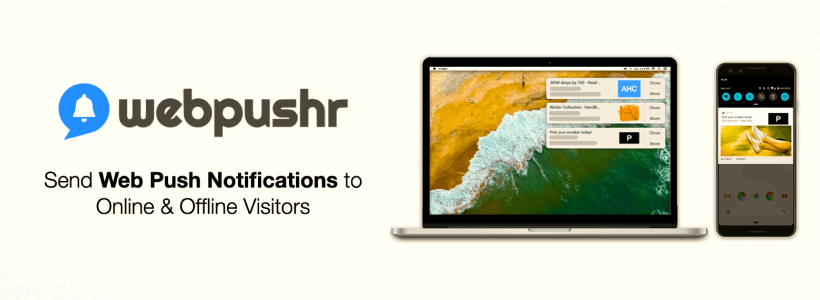
Webpushr stands out with a detailed user interface directly in your Admin dashboard. From this UI – you’ll have access to comprehensive reports of how many subscribers you have, and the total conversion rate, but also track the ratio of opened and closed notifications.
Some interesting features that Webpushr provides are the ability to integrate your opt-ins together with your favorite CRM tool. This means you can assign things like email addresses and other details to each opt-in for your push notifications. In the long run, this will allow you to create personalized segments for all your campaigns.
And, last but not least, you can enjoy complete freedom in designing the style of each push notification you send. The interface for designing the notifications includes a vast array of options to make sure each notification looks the way you like.
3. Perfecty
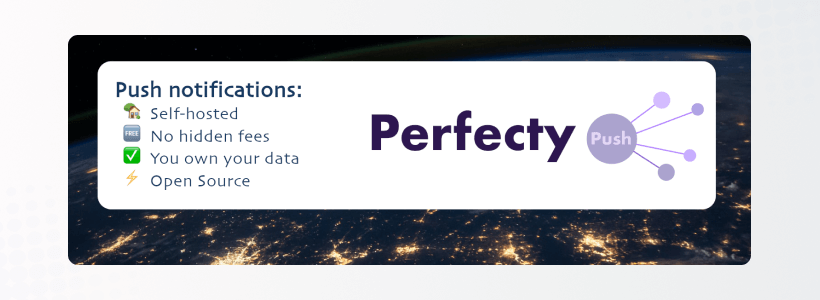
Unlike the first two options – Perfecty stands out because it is a self-hosted solution, and its source code is also published on GitHub. In other words, you won’t need to signup to an external service or use API keys because all the notifications will be sent from your own server.
If you were to host your website on one of the cheaper DigitalOcean servers – you could achieve up to 10,000 notifications per minute. Another great feature is that Perfecty supports importing data from platforms like OneSignal and others. So, if you wanted to self-host your push notifications server; Perfecty will ensure you have an as little downtime as possible.
Granted, this plugin might not have all the quirks of actual venture companies, but it’s a fantastic starting point if you only care about sending the occasional updates.
4. Gravitec
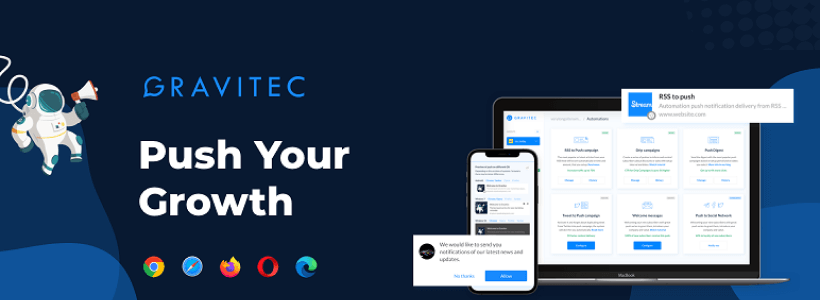
One of Gravitec’s core strengths is its easy use of the plugin to automate notifications for new blog posts and weekly digests. You can directly add an RSS feed of your entire blog or specific categories, and Gravitec will automate the process of sending out notifications upon new updates.
Furthermore, you can create weekly digests which can be configured to include anywhere from top 3 to top 10 of your most popular blog posts for that week. This feature can also monitor the articles that a specific subscriber hasn’t seen yet. And, as such, provide them only with links that are still new to them. This feature alone makes Gravitec’s plugin highly desirable.
You also have plenty of options for customizing how the subscription prompt looks. This includes changing its placement, style, and messaging to the site visitor.
5. iZooto
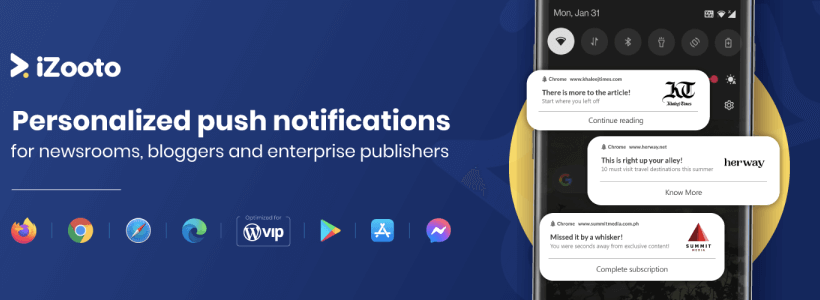
One of the ways in which iZooto differs from other similar services (and also the reason it deserves a spot in this article) is that iZooto is focused on publishers.
This is best exemplified through their custom AI engine, which can monitor user behavior and create truly personalized recommendations. Fully automated. This AI-powered approach will reap the most benefits for publishers with upwards of 1,000+ articles on their platform.
And, much like other solutions, iZooto does offer the option to migrate to their service.
Summary
Overall, I’d say this is a rather diverse list of solutions you can try. We’ve looked at everything from developer-based services, to open-source alternatives, and publisher-based tools.
If you have never tried using push notifications as a marketing channel – this might be the best time to do it. At the very least, you could monitor how well your audience responds to it.
